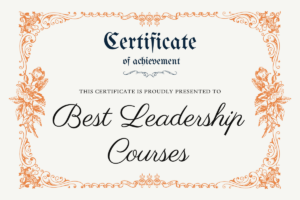It’s easy to assume that your younger employees and managers want to learn 100 percent virtually. After all, they are tethered to their mobile devices and check their phones seemingly infinite times an hour. If millennials and members of Gen Z rely on screens for entertainment and communication, why shouldn’t it be their preferred method of professional development?
The problem with this assumption is that it’s wrong. Your company’s emerging professionals crave professional development—and they want to experience it via live and face-to-face interactions.
WHY DIGITAL-ONLY LEARNING DOESN’T WORK
Organizations are investing more every year in employee learning and development, according to the Association for Talent Development’s 2018 State of the Industry Report. Technology-based learning accounted for 41 percent of the time employees spent learning, according to the same survey.
However, millennials and Gen Z may be burnt-out when it comes to screen time. When LEADx.org surveyed 200 first-time managers between 27 to 32 years old, they received many open-ended comments about online learning, including:
- “My generation really doesn’t want to learn from PowerPoints.”
- “We have tuition reimbursement, a corporate university and supposedly over a thousand courses on the network. However, there just isn’t any time. Zero time.”
Online learning alone may not yield the desired results. Professionals who participate in seminars digitally are more likely to pay attention to the speaker’s likability rather than the quality of the information, as opposed to those who attend the activities in person, according to Videoconferencing in the Field: A Heuristic Processing Model.
For companies that have made significant investments in mobile or online learning tools to train and develop employees, those comments and facts may be painful to read. However, the path forward is not about abandoning digital learning. Instead, successful professional development programs and strategies will integrate the best of both methods.
LEVERAGE FACE-TO-FACE LEARNING FOR OPTIMAL RESULTS
Digital learning tools have a time and place when combined with other delivery methods.
Younger employees, between 21 and 32 years old prefer to learn via live instructor-led training, short videos, coaching or mentoring and conversations with subject matter experts, according to a study by Wainhouse Research. Most of all, these emerging professionals value human interactions even more highly than some of their older colleagues, contrary to the prevailing view that younger workers prefer to do everything online, according to the same study.
At the same time, millennial and Gen Z employees believe that developing their soft skills will help them be successful and grow professionally. On-the-job training from employers or continuous professional development contributes 52 percent of what millennials and 44 percent of what Gen Z draw on at work, according to Deloitte’s 2018 Millennial Survey. Both generations want to build confidence and further their interpersonal skills—which is precisely what their organizations want as well.
INTEGRATING IN-PERSON TRAINING WITH TECHNOLOGY
By investing in training that incorporates digital tools with in-person teaching, organizations can help younger employees and managers develop those soft skills such as building confidence and further their interpersonal skills. This, in turn, will allow them to own their career paths. Once an emerging professional can self-manage, they can align their performance with the company’s expectations.
One way to do this is by providing a career development program to young professionals that offers the opportunity to collaborate with their peers and increase their self-awareness. Through a program such as this (and shameless plug, we offer one called AccelerateMe), emerging professionals can connect the online learning and tools your company provides to their personal development plan. This is a great way to leverage online learning and face-to-face conversations and to help millennial, and Gen Z employees drive their own career path.








